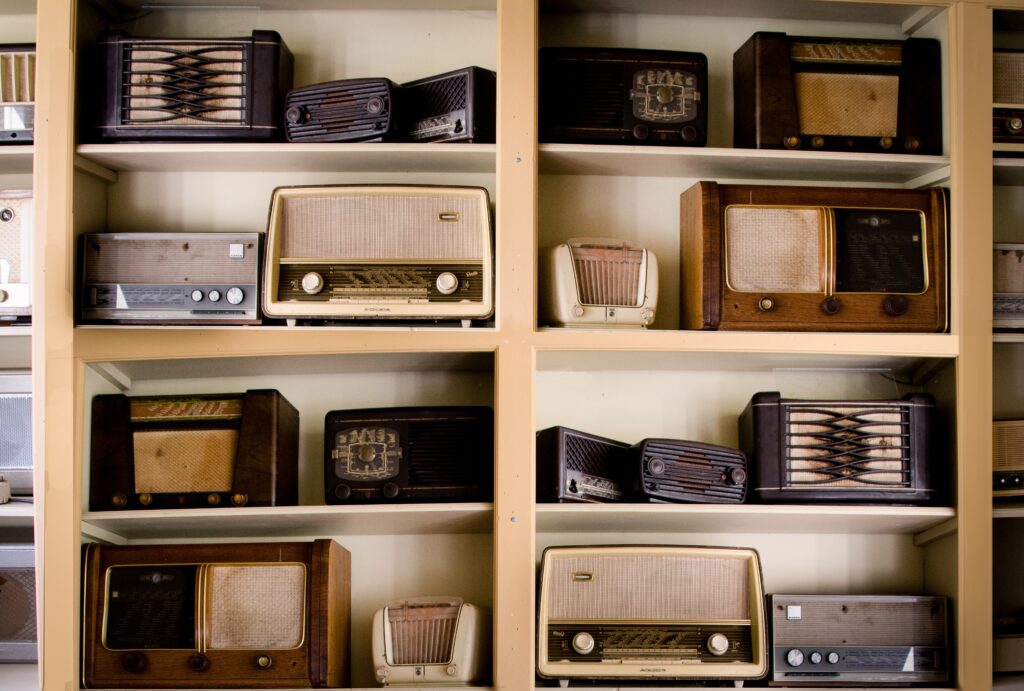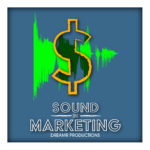Marketing through sound was given its truest opportunity after the most negative thing could have happened to our global community; coronavirus.
The coronavirus has done a lot of heavy hitting lately. It increased our anxiety for the future of our businesses and the economy of the world. What will our bottom line be when all of this blows over? How much should we spend on advertising and marketing for our brands during this time of financial uncertainty? How do we keep our sales numbers up when people aren’t spending as much?
Whenever we go back to normal, it will be a new normal.
The Past In Marketing
In the past, marketers have relied heavily on data. They’ve drawn up their statistics on typical spends and routines of “white male age 34” or “hispanic female age 56”. They market to these well thought out well researched demographics of people that buy their goods and request their services.
However, our buyer and consumer data is now outdated. What once was a spend, is now a window shop. Routines have been altered as well. The buyer persona is now the buyer persona (plus family).
March 2020
As of March 20th 2020, California became the first state to officially be on lockdown. However, in Los Angeles County, the closures started about a week before. People who generally had an hour and a half to two hour one way commute from the Inland Empire to Santa Monica (seriously you guys), are now at home. Massive conferences and festivals like NAB and SXSW were cancelled due to COVID. Students who used to frequent dorm hallways and late night parties are….not. Shopping malls are empty and restaurants are closed.
Suddenly, everyone’s at home. Some are with their family. Some are by themselves. Normal routines have stopped. Busy day to day life has slowed to a crawl. No one is shopping or socializing like they used to. No one is washing their hands like they used to.
I believe the average person is closing up their wallet till they know more about tomorrow and what it will look like. Even with the stimulus checks and the small business loans that the government has set up, it’s going to be rough.
Not The Time For a “Sell”
Now is the time to comfort and entertain. We need to sit with our patrons and consumers and say, “yes, I am with you. I relate to you.”
This is the time to innovate our marketing strategies, and get to know our consumers in a brand new way.
Ultimately, how can we market to someone without ending with a sales pitch; without being intrusive or offensive? How can we really truly connect with our audience when we are a business and need to sell our goods and services? Who is our new audience anyway?

The old persona of John Smith no longer exists. Now it’s John Smith age 34 and Joan Smith age 33 along with Sally Smith age 7 and Bobby Smith age 4. They are all there in a confined space and they are all paying attention.
This is an opportunity to respond mindfully and artistically.
The Reality in 2020
We know that the ad we wrote and shot in February 2020 about the amazing luxurious experience you’ll have driving a brand new Audi is no longer relevant. Marketing budgets have shrunk. Production has halted. Access to high end gear and the capability to do a full blown video campaign shoot are non-existent.
Hollywood has shut down.
So what can we do when our audience has changed and our access to high end gear and production facilities have been limited?
We relate and we adapt. Marketing should too.
What has had a proven track record of engagement, and authenticity for over 100 years?
Sound.
Radio; Now and Then
Radio has been king since it went commercial in 1900. As of late, it has dropped off in listenership only to be reinvented and rebooted. Same medium; different formats. The concept of auditory storytelling is still very much relevant.

Radio used to be our main source of communication. It communicated matters of our world and community as well as our main source of entertainment.
If you haven’t checked out any old “radioland” radio shows please do yourself a favor and click here or here after you read this article!
From 1900-1922, the radio networks were scrambling to find a way to monetize their programming (sound familiar…hint hint YouTube?). It wasn’t until Bell Telephone Company, a parent company of AT&T, produced the first radio advertisement in 1922 that radio figured out how to make money.
Flash forward 100 years and we’ve seen this pattern of searching for monetization options repeat itself. First in radio, then on TV, and then internet and streaming networks learned how to become profitable. Now its the evolution into voice first technology that has our attention.
Voice First Technology
The beauty and power of voice first technology is that it takes on the primary principle of radio. However, the internal and external packaging of voice tech is much more advanced.
Voice first technology is the transmission of messages through sound. Voice first is utilized through interfaces like smart speakers, voice assistance in cars and homes, wearables, hearables, and other smart technology.
One of the reasons that these new voice first technologies haven’t been fully adopted or realized is that marketers think that it’s a replacement to video and other visual devices. They don’t want to take the chance on something replacing phones or computers. They don’t see sound marketing as a realistic replacement.
It is important to note that voice technology is not a replacement of visual modality; it is an enhancement to it.
A Multimodal Experience
Phones are not going anywhere. They are way too functional to go the way of Laserdisc. Our phones serve too much functionality for any invention to realistically replace them.
Sound in marketing creates the opportunity for a multimodal experience. With voice and sound we have a unique opportunity to create an enhancement to that with which we already have established in our brand. Adding sound to sight experiences only strengthens the brands’ sensory perception.
The freedom that we have through voice and sound in marketing is that we can set up the consumer as the author of the story. They choose the function and, through cleverly crafted coding and design, they are led down a path of events of their choosing. These events they’ve chosen could be purely task driven, however, they could also be cleverly fashioned into entertainment.
Marketing Through Sound Creatively
Marketing through sound is simply being creative with smart technology. For instance, think of that podcast that focuses on the exciting world of entrepreneurship. It tells the real life stories of business owners that we know or don’t know and encourages us to explore our possibilities outside of our normal day to day.
What about that Alexa Skill or Google Assistant Action you stumbled upon? It teaches you how to do a 10 minute meditation before breakfast to set your mind right for the day ahead.
What about the narrative radio show about a scientist who travels to Mars and discovers a colony of Martians that have been studying human beings by watching repeats of Seinfeld?
How about an app that changes the sound of your voice into a favorite Looney Tunes character to leave silly and probably nonsensical messages for bored friends a few states away.
These examples are only scraping the surface of how a brand could be marketing through sound.
Where’s The Money?
So why even spend the time exploring marketing through sound? Where’s the money?
Who created the entrepreneur podcast? Maybe an entrepreneur who coaches other entrepreneur’s to be their best. If the listener is engaged and “sold” on something then they’ll call up that coach and ask for a trial lesson.
Who created the meditation skill? Maybe a yoga studio that wants to remain relevant and within one’s memory so that once our social distancing time is up, they’ll still have business.
Who told the Martian story? Maybe it was a network that had a script but couldn’t produce it as a TV show because of the quarantine so they worked it into a radio show to get their content out in a timely (less costly) way.
Who made the app? A brilliant company that markets to people with a lot more free time on their hands. When the consumer is hooked on the app itself, more products can be easily introduced.
All of these examples could fit easily into a sales funnel; attention, interest, desire, and action. Once marketing is done right, the money will come.
The Fine Print

Look closely at what is out there in the sound space. There is more to sound than what initially meets the ear. Audio content is created for engagement, entertainment, and relatability. The result is for the customer to invite the brand into their living room.
You’re enjoying yourselves. You’re engaged. And if that brand is doing their job correctly, you’re remembering who brought you those happy moments. And you’ll call on them again.
Challenging Times Call For Innovational Measures
This is how I believe we should be marketing to our consumers; now and after COVID-19 is a distant memory. There is an opportunity to truly captivate an audience with sound in marketing. How can we continue to captivate that audience? How do we turn them into our brand champion?
We need to take full advantage of this time of forced creativity. This is the time to act on and implement those projects we’ve held off on in the past. Now is the time to learn and grow within new parameters and circumstances; create new experiences for ourselves and our consumers and patrons.
“While in the regular times innovating is optional, during a crisis the necessity of evolving is crucial, urgent and vital.”
From Anastasia Shcherbakova’s Medium article
Creating in this world of sound is groundbreaking and not yet fully realized. This is the time to experiment, innovate, and challenge yourselves. Have a heart and be there for your audience. Captivate the audience with what you can do without “selling at them”. Let them know that YOU know that now’s not the time.
Now is the time to get on board with voice and sound in marketing.
Related Articles on Sensory Marketing
For more on Sensory Marketing, check out:
How Dove Succeeded Creating a Massive Sensorial Experience
Sound; An Interruption to Visual Marketing
Let’s Make Sound On Purpose
Excited to explore your brand soundscape? Dreamr Productions would love to help. Contact us today for more information.


